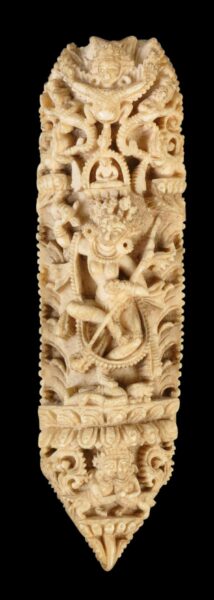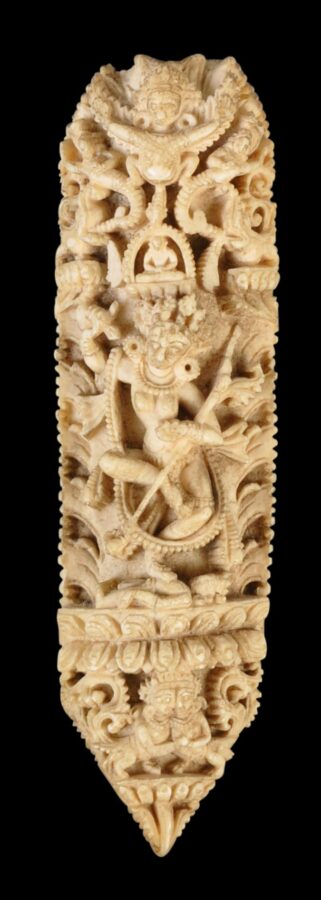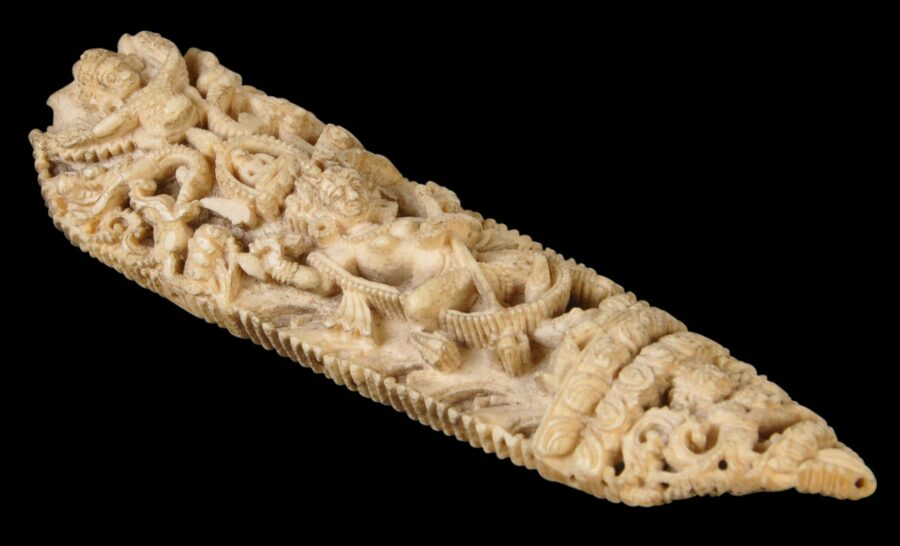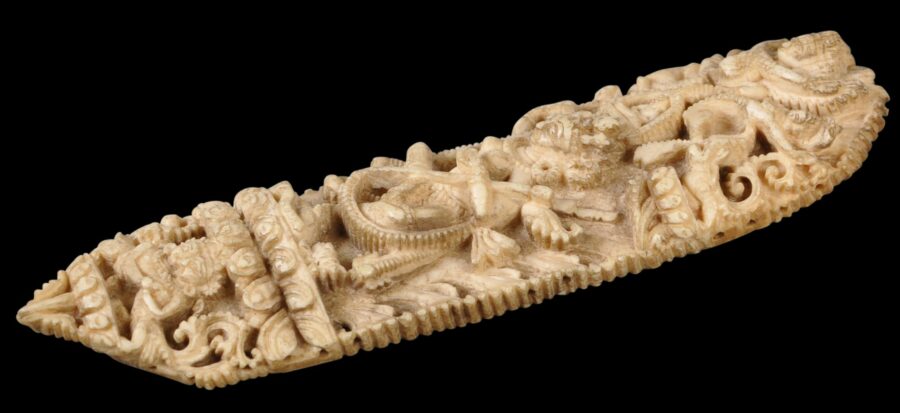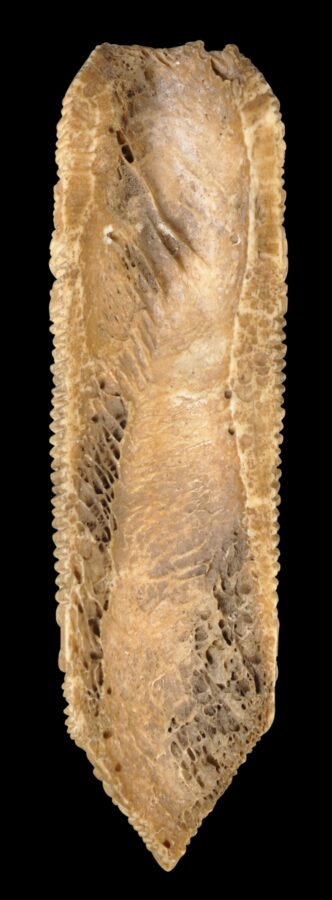This superbly carved bone plaque dates to 16th century Tibet and would have decorated a necromancer’s bone apron or girdle. It is unusually detailed and finely carved.
Vajravarahi, a wrathful form of Vajrayogini, and associated particularly with the Chakrasamvara Tantra where she is paired in yab-yum with the Heruka Chakrasamvara, forms the central figure in the plaque. She stands on a human corpse and holds various attributes in her two hands. Above here there is a small Buddha figure above which there is Garuda, and on each side, a makara, from which the mouths issue forth foliate scrolls on which celestial nymphs rest. Below, there is an embracing pair of half bird, half human figures. The edge of the plaque has been carved with serrations all the way around.
Bone aprons were worn as ritual garments by the practitioner or priest during Tantric rituals. The aprons served to make the priest look more dramatic, as well as symbolising one’s own mortality and the need to release one’s attachment from the physical human body in order to more effectively pursue enlightenment.
Traditionally such bone aprons were made from human bones collected from charnel fields.
The plaque here is in very fine condition.
References
Henss, M., Buddhist Ritual Art of Tibet: A Handbook on Ceremonial Objects and Ritual Furnishings in the Tibetan Temple, Arnoldsche, 2020.


